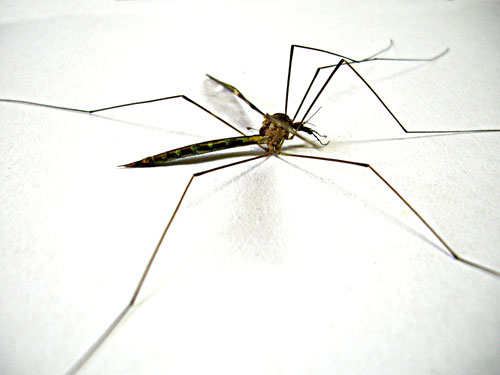Spend any time on the Thorntree or BootsNAll travel forums and you’ll no doubt hear backpackers discussing which vaccinations are most prudent when traveling abroad. Seasoned travelers and travel health professionals agree almost universally that the most frightening and deadly disease to be aware of is malaria.
Vagabondish is reader-supported. When you buy through links on our site, we may earn a small affiliate commission. Read our disclosure.

According to Wikipedia:
It is widespread in tropical and subtropical regions, including parts of the Americas, Asia, and Africa. Each year, it causes disease in approximately 650 million people and kills between one and three million, most of them young children in Sub-Saharan Africa.
An excerpted NIAID fact sheet shows that malaria is virtually tied with AIDS/HIV among the world’s most prolific killers. This rather disturbing video shows how rapidly a malaria infection can spread:
To be sure, there is no known cure for malaria.
“… unlike HIV, there are a number of cures for malaria, even the resistant forms, but often the drug regimens are expensive and take time. Even though there are treatments, as long as a traveler doesn’t have too many side effects it is better to take the preventatives rather then chance it!”
And according to the CDC, he’s absolutely right. Thanks for setting me straight, Eric!
For travelers, the threat of the disease can be tempered with a number of preventative medications known as antimalarials. Such drugs are not without side effects however – some numerous, including:
- Stomach upset and nausea
- Diarrhea
- Vaginal yeast infection (yeast vaginitis)
- Sensitivity of the skin to sun exposure (severe sunburn) and of the eyes to light (photosensitivity)
- Sleep disturbances (such as vivid dreams)
- Headaches
- Temporary hair loss
- Headache
- Seizures
- Disruption of coordination and vision
Lovely.
Thus, it’s of some comfort to know that scientists may now be much closer to finding a means to eliminate the spread of malaria once and for all. Via Scenta:
The Anopheles mosquito’s role in spreading malaria has led it to be considered the world’s most dangerous animal.
Now, a team of international scientists has drawn up a molecular and anatomical map of the female. The map, which focuses on the creature’s sense of smell, could be integral to devising a way of blocking it from seeking out it’s next meal, human blood. It is through the mosquito’s feeding habits that malaria spreads.
According to Vanderbilt University’s Tan Lu, by genetically augmenting the female’s maxillary palp – a sensory organ central to the insect’s ability to sniff out human sweat – it is believed that “the mosquito would not do nearly as well at finding human prey.”
In geek speak:
“This research… provides a biological context and then strips it down to a few molecular targets that we are using to develop chemical modifiers that should have direct impacts on the mosquito’s behaviour,” continued Professor Laurence Zwiebel, also from Vanderbilt.
Clearly, this is great news for the hundreds of millions of Asians and Africans who live in at-risk areas for malarial infection, but it may also provide a glimmer of hope for travelers tired of toting buckets of antimalarials on their long-term travels around the world.


